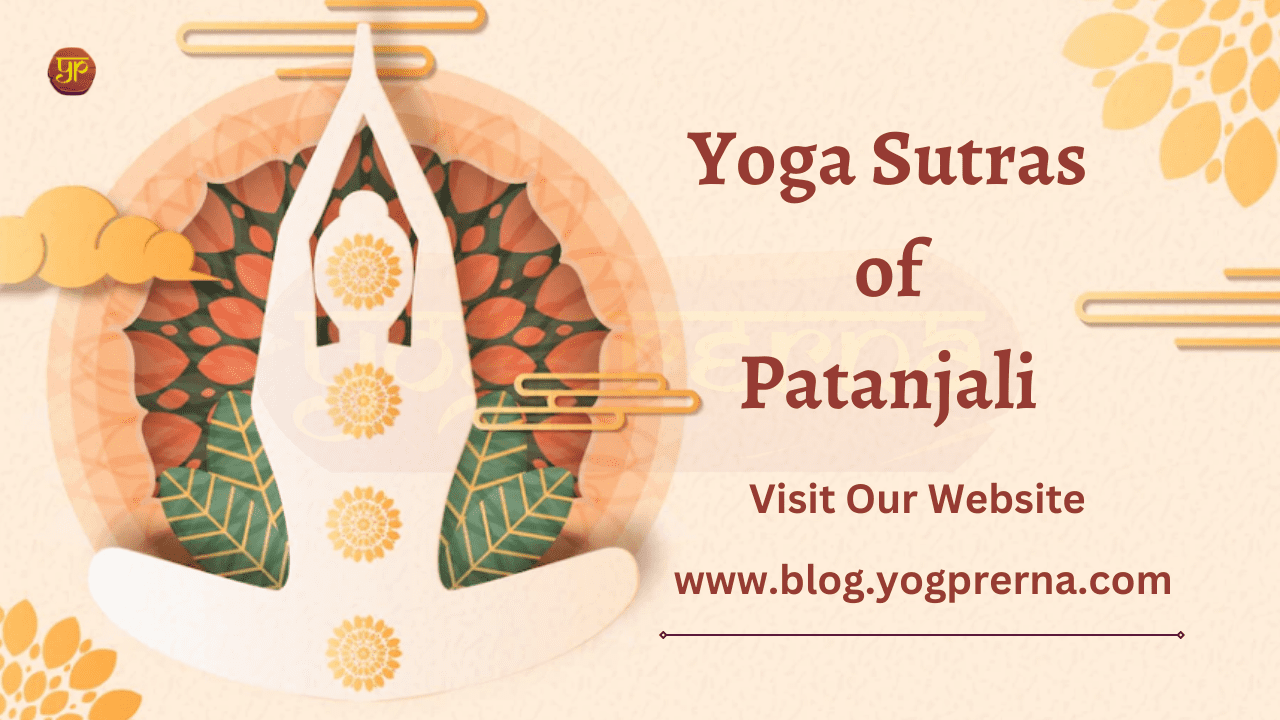Yoga Sutras of Patanjali
The fusion of the body, mind, soul, and spirit is the essential essence of yoga. According to yoga, our suffering stems from the delusion that our particular awareness is separate from Eternal Awareness or Brahman. The Yoga Sutras of Patanjali are a helpful manual for your spiritual path of remembering that connection.
The Patanjali Yoga Sutras might not yet be recognizable to you if you’re new to yoga. In a word, the Yoga Sutras of Patanjali are 196 brief phrases that serve as a roadmap for achieving wisdom and self-realization via yoga. The treatise is widely recognized as the foundation of yoga philosophy and is thought to have been written around 400 C.E.
What are Patanjali Yoga Sutras and How did they Come into Existence?
All the Munis and Rishis once came to Lord Vishnu to complain that despite the fact that he as Lord Dhanvantari had provided them the ability to use Ayurveda to treat illnesses, people continued to get sick. They were interested in learning what to do in cases of illness.
Dealing with psychological and emotional diseases is sometimes equally as important as dealing with physical illness. How can one purge sins like desire, jealousy, rage, and greed? What is the equation?
On his bed of snakes, which included the serpent Adishésha with 1000 heads, Lord Vishnu was resting. When the Rishis came to Him, He handed them Adishésha (the representation of consciousness), who was born as Maharishi Patanjali and entered the earth.
Let’s decipher Patanjali’s ages-old knowledge
4 padas—Samadhi, Sadhana, Vibhuti, and Kaivalya—make up the 196 sutras, which are translated as “strands” or “narratives” in English. Although the Yoga Sutras of Patanjali themselves are open to the practitioner’s perspective, their primary goal is to give yogis and yoginis insight and useful knowledge as they investigate the essence of yoga.
Samadhi Padas
The purpose of yoga is covered in the first section of Patanjali’s Yoga Sutras. The 51 sutras in this part emphasize concepts of knowledge, concentration, and meditation and are intended for people who already incorporate yoga into their everyday lives.
Sadhana Padas
The second chapter of the Yoga Sutras of Patanjali describes how to reach a yogic condition, pushing the narrative forward but possibly backward in philosophy. The 55 sutras in this part cover the eight limbs of yoga and discuss how to practice it.
Yama – It stands for proper treatment of others. There are five ethical tenets in it. Nonviolence, Truthfulness, Not stealing, not wasting energy, Abstaining from greed.
Niyama – Five principles of conduct and discipline. Purity, contentment, spiritual observances, study, and Devotion.
Asana – The yogi’s seat and the body-preparation postures; the seat of awareness.
Pranayama – Breathing exercises to increase life force.
Pratyahara – Exploring the inner cosmos by turning the senses within.
Dharana – Natural concentration; instruction in meditation.
Dhyana – The refined flow of meditation.
Samadhi – In the Divine, oneness whether lost or found.
The chapter delves particularly into the first six of the eight limbs of yoga, rendering it perhaps the most crucial for “newcomers” and those looking to incorporate yogic heritage into their daily life.
The body is prepared for the following three Yamas, which lead you to the eighth Yama’s entrance, by the first four.
Samyama is the practice of Dharana, Dhyana, and Samadhi all at the same time. Knowledge of an object’s laws of nature as well as Yogic Powers are attained by relaxing the mind, having a delicate purpose, and putting it into the field of Ultimate Organizing Power (Siddhis).
Vibhuti Padas
The 56 sutras in chapter 3 emphasize the advantages of frequent yoga practice. Patanjali delves further into the final two limbs of yoga, Dhyana and Samadhi, as well as the force and realization that come from practicing yoga.
Kaivalya Padas
Patanjali’s Yoga Sutras include 34 sutras that are centered on enlightenment and escape from pain. Here, the text examines the ultimate purposes of yoga and offers an intelligent analysis of the ultimate, unconditional liberty yoga offers.
There’s always something new to learn from the Yoga Sutras of Patanjali, whether you are just beginning your yoga practice or have been practicing for years.
The Practice of Samadhi
Only after meditation is mastered is it able to practice samadhi. There are various stages of Samadhi:
Savikalpa Samadhi
- You learn more about tangible things.
- You are aware of how abstract some things are.
- Up till you are simply conscious of happiness, you move beyond objects.
- All that is left is I-ness.
Nirvikalpa Samadhi
- You merge with the Soul, experiencing only unending ecstasy and calm.
- The heart appears to be larger than the cosmos.
Sahaja Samadhi
- Nirvikalpa’s ongoing experiences and routine activities.
Dharma Megha Samadhi
- All lovely attributes are present in the greatest Samadhi, the state of Unclouded Truth (Cloud of Virtue).
- Every desire has vanished, including the yearning to know God.
- The sources of misery, everything that influences the mind, and the restraints of action vanish.
Conclusion
The earliest known text on yoga is the Patanjali Yoga Sutras. Despite having a significant meaning, the Sutras are incredibly brief. These sutras are the shortcut to ultimate liberation. Stay tuned for more informative articles.
Frequently Asked Questions (FAQ)
-
What are the main Yoga Sutras of Patanjali?
The main Yoga Sutras of Patanjali are Ahimsa, Satya, Asteya, Brahmacharya, Aparigraha, Saucha, Santosa, Tapas, Svadhyaya, Ishvara Pranidhana etc.
-
How many sutras are there in Patanjali yoga?
The Yoga Sutras of Patanjali are a set of 195 sutras (aphorisms), as per Vysa and Krishnamacharya, and 196 sutras, respectively, on the principles and practice of yoga (according to others, including BKS Iyengar).
-
What is the purpose of Yoga Sutras?
Although the Yoga Sutras themselves are available from the practitioner’s perspective, their primary goal is to give yogis and yoginis deep and helpful information as they study the essence of yoga.
-
Who is the real owner of Patanjali?
Consumer products tycoon Patanjali Ayurved is the foundation of Acharya Balkrishna’s wealth. The majority of the privately held business, which Balkrishna and the politically well-connected yoga instructor Baba Ramdev co-founded, is owned by Balkrishna.





